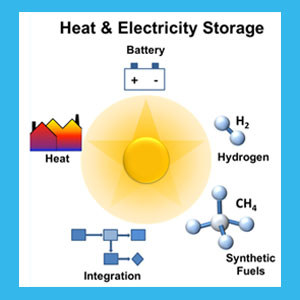Speaker
Mrs
Thi Mien Trung Huynh
(Department of Chemistry and Biochemistry, University of Bern)
Description
Dissociative adsorption and intercalation of hydrogen on/into metal surfaces is one of the most intensively studied processes in electro-catalysis.
In our current study we present combined electrochemical and in-situ STM work on the impact of the hydrogen evolution reaction (HER) onto the structure of a Cu(111) electrode surface exposed to a dilute (5 mM) sulfuric acid solution (Fig. 1). Hydrogen evolution takes place at potentials more negative than the decay of the laterally ordered adlayer of sulfate anions. The adsorption/desorption and lateral ordering of sulfate is associated with the appearance of a pair of peaks in the respective voltammogram (P1 and P2 in Fig. 1).
The reduction of hydronium cations into hydrogen strongly affects both the geometric and electronic structure of the Cu(111) surface without changing the overall atom density in the topmost copper layer. The latter effect has recently been described for the respective Cu(100) electrode surface under hydrogen evolution [1].
On Cu(111) a highly ordered (4 x 4) super-lattice forms under hydrogen evolution with an in-plane coordination of individual copper atoms that significantly deviates from an ideally hexagonal one. In-planes distortions and a profound buckling of the Cu(111) lattice is rationalized in the light of recent DFT calculations as a population and lateral ordering of sub-surface hydrogen [2].
[1] H. Matsushima, A. Taranovskyy, C. Haak, Y. Gruender, O. M. Magnussen, J. Am. Chem. Soc., 131, 10362 (2009).
[2] M. F. Luo, G. R. Hu, Sur. Sci., 603, 1081 (2009).
Author
Mrs
Thi Mien Trung Huynh
(Department of Chemistry and Biochemistry, University of Bern)
Co-author
Dr
Peter Broekmann
(Department of Chemistry and Biochemistry, University of Bern)

